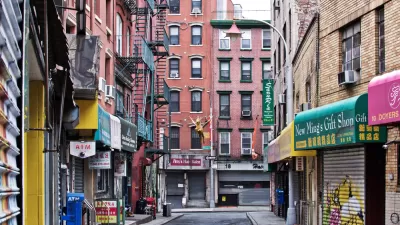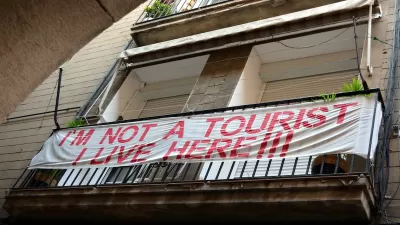'Rurbanismo,' as it's called, describes the reversal of historic migration patterns now engulfing Spain, as a generations-old trend of rural-to-city movement has been reversed.
As nations modernize and economies expand, populations increasingly urbanize. Think of the fast-paced growth of American cities in the early 20th Century. For a contemporary version, think of China. Raphael Minder, of The New York Times, looks at Spain's surprising reversal of this trend: "The movement has steadily built, but it has been accelerated by Spain's economic crisis, breathing new life and entrepreneurship into some nearly abandoned areas. "
"But it is clear...that Spain's cities of more than 100,000 inhabitants have recently stopped growing while villages of fewer than 1,000 are no longer shrinking," finds Minder, citing statements by Carles Feixa of the University of Lleida. While jobs have been shed across the nation, cities remain too costly for many, and the loss of a job may be the incentive necessary to compel many Spaniards to return to their rural roots.
Yet, "[e]conomic necessity is certainly not the only reason Spaniards are moving to the country," says Minder. "Around Villanueva, for instance, a community of artists has sprouted, from graphic designers to musicians and sculptors. Some have restored farm buildings in which tobacco and peppers used to dry."
"Rurbanismo has brought other changes to Spanish village communities, including the creation of "time banks," in which hours of labor are exchanged for goods and services."
FULL STORY: The Country Beckons Spaniards as Jobs in Cities Grow Scarce

Alabama: Trump Terminates Settlements for Black Communities Harmed By Raw Sewage
Trump deemed the landmark civil rights agreement “illegal DEI and environmental justice policy.”

Study: Maui’s Plan to Convert Vacation Rentals to Long-Term Housing Could Cause Nearly $1 Billion Economic Loss
The plan would reduce visitor accommodation by 25% resulting in 1,900 jobs lost.

Planetizen Federal Action Tracker
A weekly monitor of how Trump’s orders and actions are impacting planners and planning in America.

Wind Energy on the Rise Despite Federal Policy Reversal
The Trump administration is revoking federal support for renewable energy, but demand for new projects continues unabated.

Passengers Flock to Caltrain After Electrification
The new electric trains are running faster and more reliably, leading to strong ridership growth on the Bay Area rail system.

Texas Churches Rally Behind ‘Yes in God’s Back Yard’ Legislation
Religious leaders want the state to reduce zoning regulations to streamline leasing church-owned land to housing developers.
Urban Design for Planners 1: Software Tools
This six-course series explores essential urban design concepts using open source software and equips planners with the tools they need to participate fully in the urban design process.
Planning for Universal Design
Learn the tools for implementing Universal Design in planning regulations.
Caltrans
Smith Gee Studio
Institute for Housing and Urban Development Studies (IHS)
City of Grandview
Harvard GSD Executive Education
Toledo-Lucas County Plan Commissions
Salt Lake City
NYU Wagner Graduate School of Public Service





























